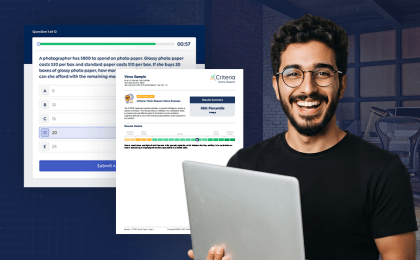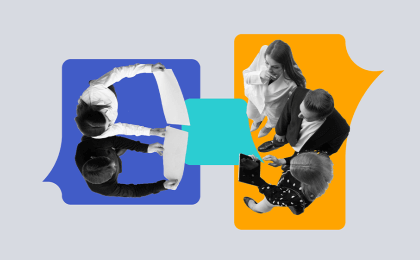(This article originally appeared on Recruiter.com.)
Although it’s difficult to think of anything more integral to a business’s success than the quality of its employees, many selection processes are fraught with risks and challenges. Hiring and onboarding employees requires significant resources and all too often results in failure: new hires who take an excessive amount of time to ramp up, are ultimately unsuccessful on the job, and turn over. The costs inherent to each of these outcomes are significant, particularly for small and midsize businesses that cannot afford even one bad hire.
Better hires get up to speed faster, perform better, and stay on the job longer than their counterparts. The impact of making the right decision — or the wrong one — is enormous. How large, you ask?
Speed to Ramp Up
It takes an average of 180 days for new hires to fully learn their roles and reach a level of proficiency at which their performance outweighs their day-to-day cost. Length of time varies, in part, based on complexity of role, with clerical workers requiring an average of 8 weeks, 20 weeks for professionals, and 26 weeks for leaders. This lost productivity from the learning curve can cost $100-250 million each year for large organizations.
Yet, on a dollar-to-dollar basis, the cost is even greater for small and midsize businesses when you consider the revenue generated — and lost — by smaller businesses as a percentage of their total revenue. While hundreds of millions of dollars may only be a small percentage of a large business’s revenue, the cost as a percentage of revenue for small and midsize businesses is arguably even greater. One slow new hire out of five employees means that as much as 20 percent of that business’s productivity is lost.
Job Performance
Top performers contribute 40-67 percent more to their organizations than average performers. It’s 40 percent for individual contributors, 49 percent for leaders, and 67 percent for salespeople. For a large business, this can mean that a new salesperson generates $1.67 million instead of the $1 million that their average salespeople produce. For a small business that may only hire two or three salespeople, this can be the difference between staying in business and having to close up shop. Similarly with leadership, one bad hire might equate to a less productive team in a large company, while the other 50 teams perform just fine. A bad hire can spell disaster for a small or midsize business that may have just one team.
Cost of Turnover
Turnover costs organizations an enormous amount. At the industry level, it costs companies up to 50 percent of their profits. For example, call centers lose 43 percent of their earnings due to turnover. In technology, the cost of turnover is 43 percent, and 50 percent of earnings are lost due to voluntary and involuntary turnover in specialty retail.
For small and midsize businesses, turnover starts a vicious cycle of lost productivity, hiring costs, excessive workloads, and added stress on those workers who remain on the job. This can also lead to slower ramp-up of new hires and existing workers being pulled away from their jobs to train new employees. All of this can result in a loss of productivity for the business that can take months to recover from.
How is a business supposed to avoid all of these setbacks? How can a small or midsize company make better hiring decisions, ensure new hires get up to speed quickly, perform better, and stay longer on the job? The answer is by leveraging a proven technology.
A Brief History of Pre-employment Testing
Years ago, before the advent of pre-employment testing, companies mainly had to rely on interviewing and subjective judgment to decide whom to hire. Necessity being the mother of invention, the outbreak of World War II required better selection processes for the hiring of one of the most critical jobs: spies.
Decades of research had demonstrated conclusively that selection methods based on subjective judgment, such as unstructured interviewing, were far less accurate and far less predictive than pre-employment testing, the hallmark of which is automated scoring. Pre-employment testing is far more reliable, accurate, and predictive of job performance, in part due to the automated scoring method inherent to it. In fact, the findings across numerous studies were so conclusive and damning to subjective decision-making processes that the fate of the world could not be left to them.
Yet structured processes capitalizing on automated scoring, like pre-employment testing, were far from mainstream at the time. It took nearly 40 more years for a technological breakthrough to finally make pre-employment testing a scalable process available to the masses: the internet.
The internet allows for pre-employment tests to be delivered in real time anywhere in the world. Candidates can access pre-employment tests via laptop, tablet, and cellphone, enabling them to complete brief, engaging, and highly predictive assessments 24 hours a day. Testing platforms initially built to support high-volume hiring by large organizations have the scalability to efficiently run billions of online tests, empowering businesses of all sizes to capitalize on more accurate and predictive selection processes while virtually eliminating any administrative burden associated with the hiring process.
For small and midsize businesses, this opportunity to capitalize on pre-employment testing levels the playing field, empowering them to compete for talent with even the largest organizations. The results are staggering:
- A strong and long-standing body of research demonstrates that cognitive aptitude is one of the most accurate predictors of job success. This research has demonstrated cognitive aptitude to be valid, reliable and strongly predictive of future work performance.
- The ability to use personality assessments that enhance predictiveness by assessing for work ethic; reliability; dependability; ability to get along with others; and job-specific traits like sales ability, customer-service orientation, and safety awareness. In fact, when used in conjunction with cognitive ability tests, personality assessments can enhance overall prediction of job performance by measuring candidates’ willingness to perform at their best.
For companies of all sizes, this results in new hires who get up to speed faster, perform better, and stay on the job longer than their peers. For small and midsize businesses, the impact is arguably even greater, as these businesses cannot afford even one bad hiring decision.
In a very real sense, many small and midsize businesses sit on the precipice of greatness, needing to ensure that their next hire is optimally successful. For each of these businesses, the stakes could not be higher. Pre-employment testing gives these businesses a tool that can help them achieve their goals and ensure bright futures for their organizations.





